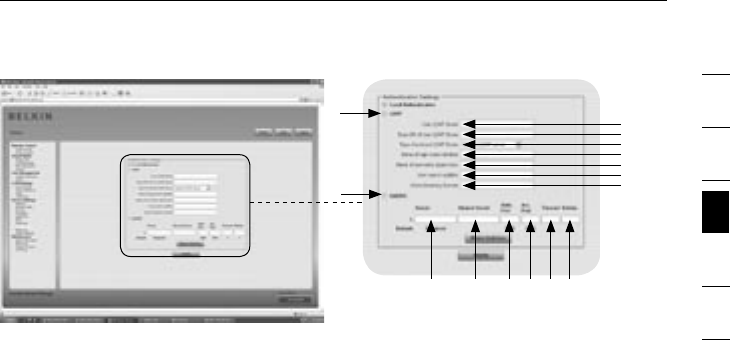
1
2
3
4
5
6
section
64
4-5 Device Settings Menu Options
Authentication
1
1a
1b
1c
1d
1e
1f
1g
2
2a 2b 2c 2d 2e 2f
The RIPM lets you either use a local authentication or keep the information
in a central Lightweight Directory Access Protocol (LDAP) or in a Remote
Authentication Dial-In User Service (RADIUS) server. For LDAP or RADIUS, you
must specify some information in the Authentication Settings panel. For more
information regarding the LDAP and RADIUS settings, see below.
1. LDAP
1a. User LDAP Server
Enter the name or IP address of the LDAP server containing all the user
entries. If you choose a name instead of an IP address, you need to
configure a DNS server in the network settings.
1b. Base DN of User LDAP Server
Specify the distinguished name (DN) where the directory tree starts in the
user LDAP server.
1c. Type of External LDAP Server
Set the type of the external LDAP server. This is necessary because
some server types require special handling. Additionally, the default
values for the LDAP scheme are set appropriately. You can choose
between a Generic LDAP Server, a Novell Directory Service, and a
Microsoft Active Directory. If you have neither a Novell Directory Service
nor a Microsoft Active Directory, then choose a Generic LDAP Server and
edit the LDAP scheme (see below).
1d. Name of Login-Name Attribute
This is the name of the attribute containing the unique login name of a
user. To use the default, leave this field empty. The default depends on
the selected LDAP server type.
1e. Name of User-Entry Object Class
This is the object class that identifies a user in the LDAP directory. To use
the default, leave this field empty. The default depends on the selected
LDAP server type.


















